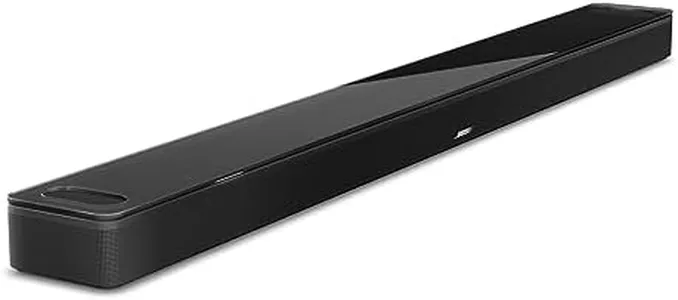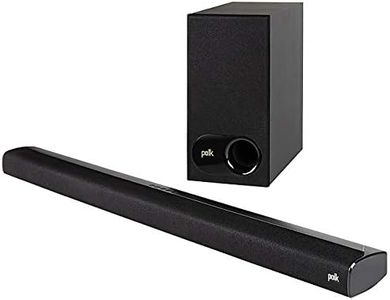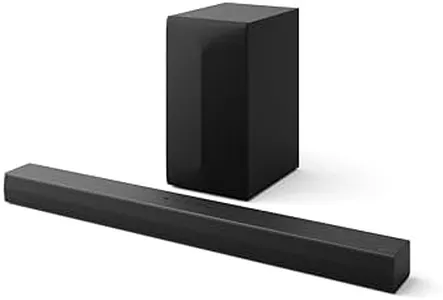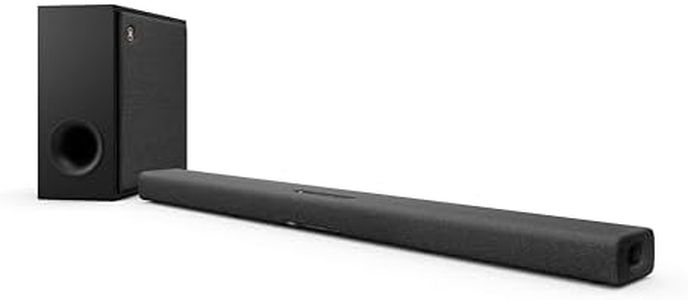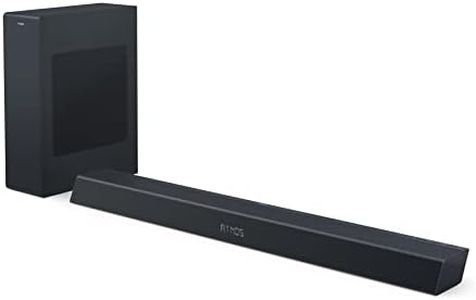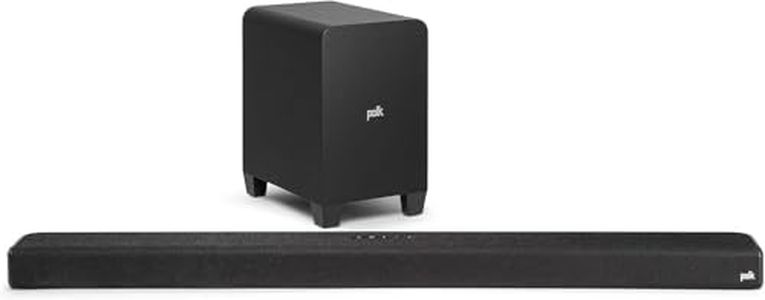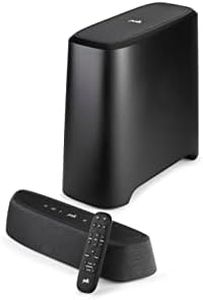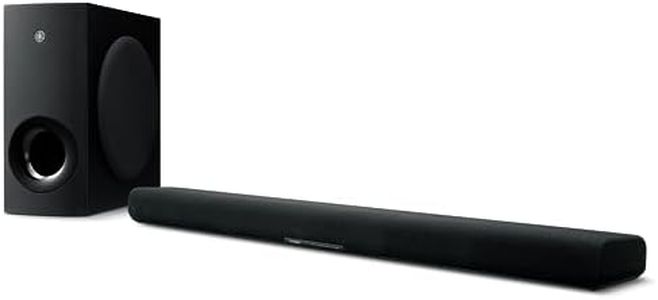We Use CookiesWe use cookies to enhance the security, performance,
functionality and for analytical and promotional activities. By continuing to browse this site you
are agreeing to our privacy policy
10 Best Wireless Soundbar
From leading brands and best sellers available on the web.Buying Guide for the Best Wireless Soundbar
When choosing a wireless soundbar, it's important to balance sound quality, ease of use, and features that suit your entertainment space. Wireless soundbars offer a simple way to boost your TV's audio without tangling with cables. Instead of getting lost in brand names or flashy ads, focusing on the important specs will help you find the right soundbar that matches your listening habits, room size, and preferred ways of connecting devices.Wireless ConnectivityWireless connectivity means the soundbar can connect to your devices (like TVs, phones, or tablets) without needing physical cables. This can be achieved through Bluetooth, Wi-Fi, or sometimes both. Bluetooth is the most common and works well for directly streaming music from a phone or tablet, but it might have slight audio delays when watching movies. Wi-Fi offers higher quality and fewer delays, and some soundbars with Wi-Fi can connect to your home network for multi-room audio setups. If you simply want to play music from your phone, Bluetooth is enough; if you want smoother movie audio or integration with smart home systems, prioritize Wi-Fi support.
Number of ChannelsThe number of channels refers to how many separate audio speakers or sections the soundbar uses to create surround or stereo effects. Common setups are 2.0 (just left and right), 2.1 (left, right, plus a subwoofer), 3.1 (adding a center channel for clearer dialogue), and beyond (such as 5.1 or 7.1 for more immersive surround sound). If you mainly watch TV or listen to music, a 2.0 or 2.1 system may be enough. For better movie experiences and clearer dialogue, look for 3.1 or higher. Dedicated surround sound (5.1 and up) is best for home theater lovers seeking immersive audio, but may require extra space for separate speakers.
Subwoofer InclusionA subwoofer is a speaker dedicated to producing deep bass sounds, which make explosions, music, and action scenes feel powerful. Some soundbars include a wireless subwoofer, which you can place anywhere in the room for optimal bass. Others have built-in subwoofers or no subwoofer at all. If you enjoy watching action movies or listening to bass-heavy music, a system with a dedicated subwoofer is ideal. If space is limited or you primarily watch news and sitcoms, you might be fine without one.
Audio Formats SupportedAudio formats like Dolby Digital, Dolby Atmos, or DTS:X determine how the soundbar processes movie and TV soundtracks. Advanced formats like Dolby Atmos create a more realistic, 3D sound experience—particularly noticeable in newer movies. Basic stereo or simple surround (Dolby Digital) is adequate for everyday use. If you stream or own lots of modern movies with advanced soundtracks, look for a soundbar supporting these formats; if not, standard formats will be sufficient.
Smart Features and Voice AssistantsSome wireless soundbars come with built-in smart features, such as compatibility with voice assistants like Alexa or Google Assistant. These allow for hands-free control, music streaming, and sometimes integration into your smart home system. If you already use smart devices or want easy voice control, consider a soundbar with these capabilities. If you just want basic audio improvements, these features may not be necessary.
Sound Adjustment FeaturesSound adjustment refers to the different audio modes and settings a soundbar offers. Many have presets like 'Movie', 'Music', 'Dialogue', or 'Night', which change how the sound is processed to suit different content. Some also have night modes that lower loud sounds for late-night viewing, or dialogue enhancement to make speech clearer. If several people in your home have different listening preferences, or if you watch a mix of content, look for versatile sound adjustment features.
Size and PlacementThe physical size of the soundbar is important for both its fit under your TV and the quality of audio it can produce. Larger soundbars often provide a wider soundstage and better audio clarity, but take up more space. Make sure to measure your TV stand or wall area to ensure the soundbar fits comfortably. For smaller rooms or TVs, a compact model may be more appropriate, while larger rooms benefit from bigger soundbars that can fill the space with sound.
